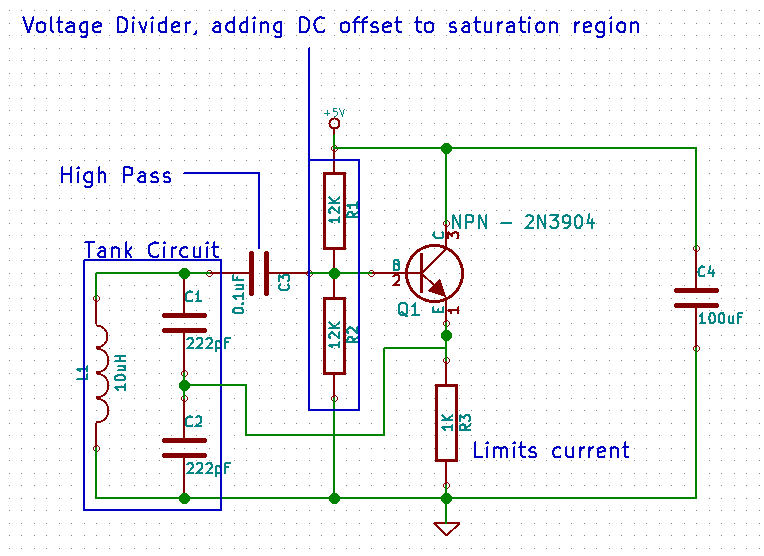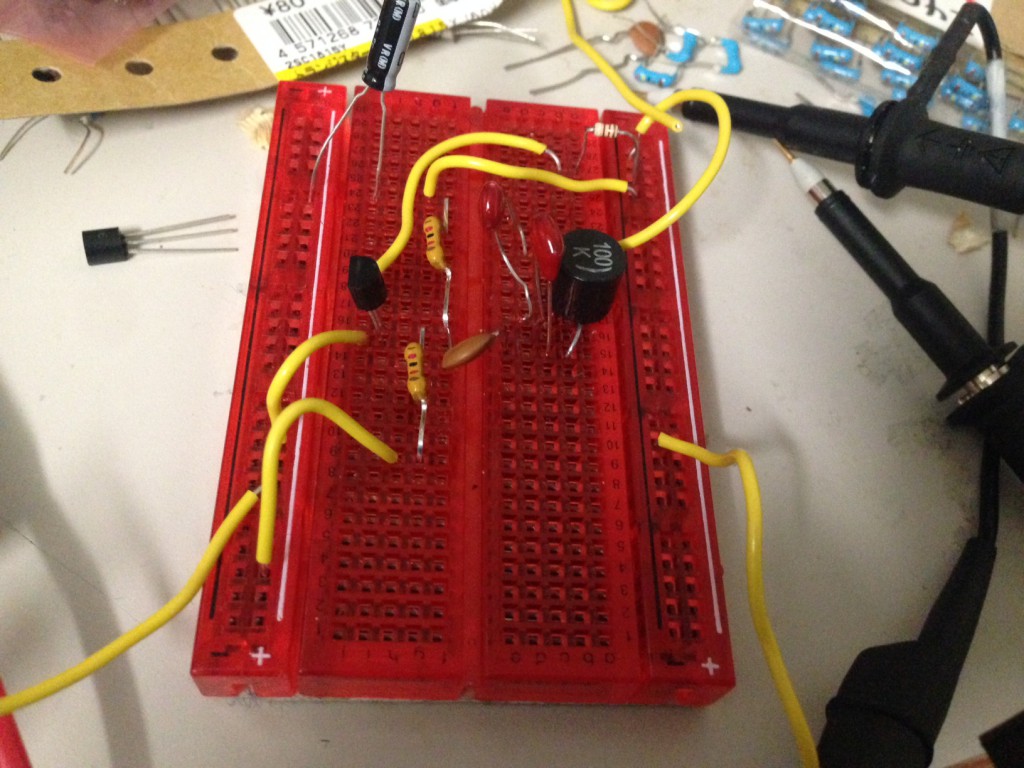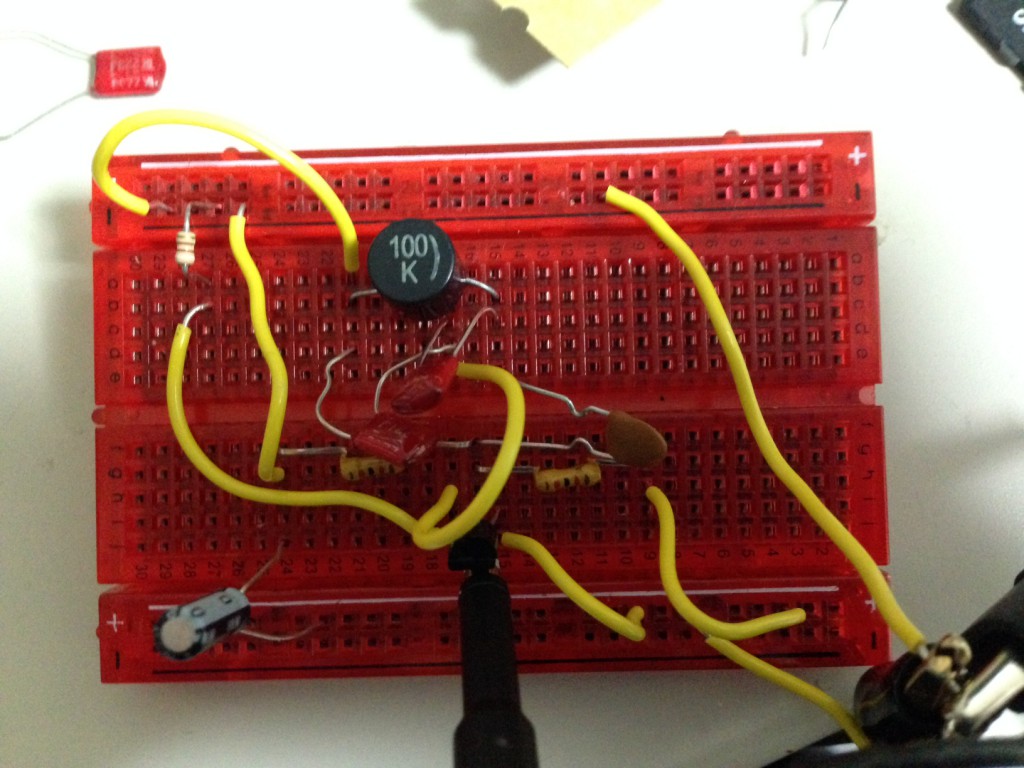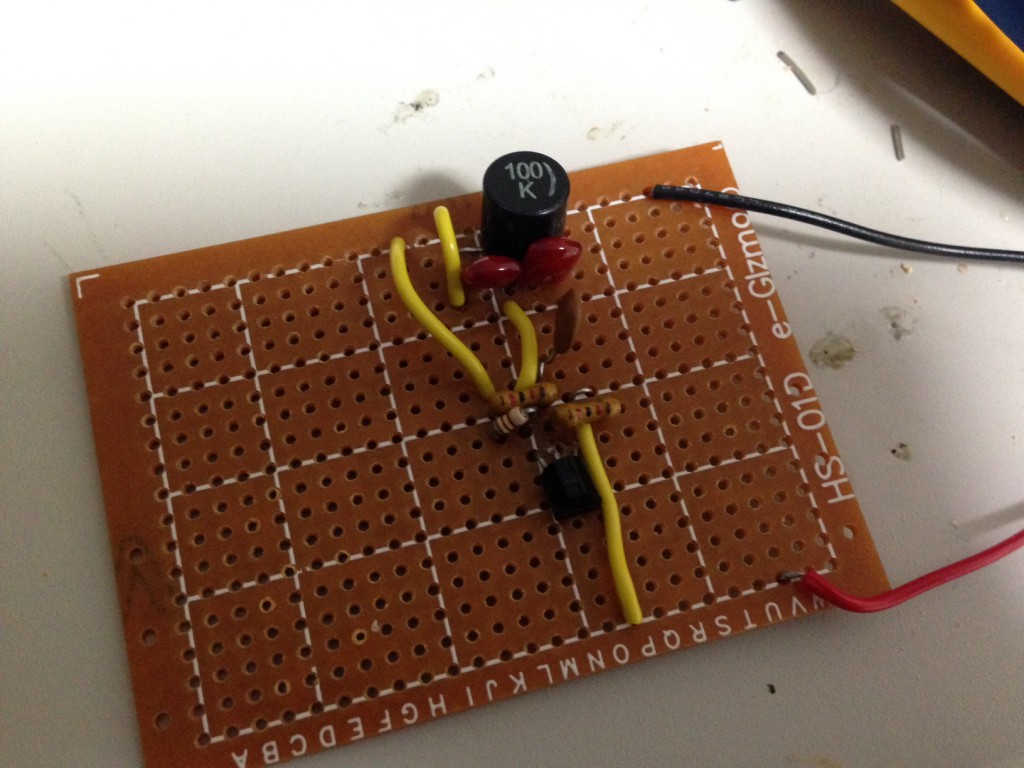NPN Common Collector, Colpitts oscillator notes
Today I built up a colpitts oscillator (shown above). The Colpitts oscillator is a tank (or LC network oscillator). It uses the resonance of an LC network which I looked at yesterday in a feedback loop to generate a oscillation.
The circuit I used is shown above, I’ve annotated the function of the different parts of the circuit as I understand it.
I’ve a lot more to learn to understand how this is working properly, but this is my vague understanding so far…
In terms of conventional current flow, when the circuit powers up, C1 and C2 are charged with a positive voltage at the point where they are connected to the emitter. As they charge, C1 pulls the base negative, reducing the current flow. The inductor also gets current pulled through it, inducing a magnetic field as it does so. The transistor will reduce the flow of current on out of the emitter as the current on the base decreases. Meaning C1 and C2 will being to discharge. As they do so, current will no longer flow through the inductor. The magnetic field will therefore collapse, the breakdown of the field again generates a current, but this time in the opposite direction. It charges C1 and therefore C2, resulting in a resonance. This resonance is maintained my the positive feedback from the transistor.
Here are some waveforms I recorded:
[UPDATE]
After reviewing the circuit, I realized 2 things. 1) It should have been oscillating at 4MHz. 2) I’d omitted the feedback from the emitter to the tank!
After fixing this the circuit correctly oscillated at 4MHz, I also no longer needed the decoupling capacitor! Here’s the new output waveform:





